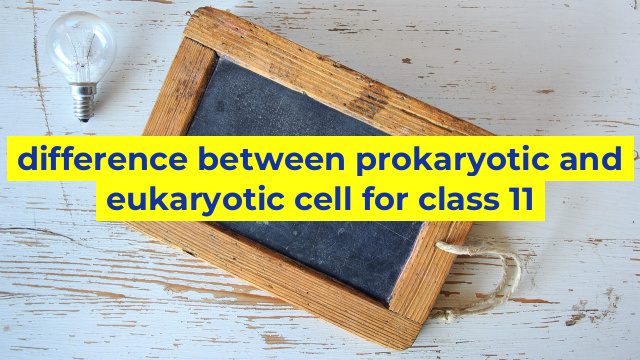Understanding the Difference between Prokaryotic and Eukaryotic Cells
Introduction
Cells are the basic unit of life that make up all living organisms. They vary in shape, size, and function. However, not all cells are the same. In fact, there are two major categories of cells, prokaryotic and eukaryotic cells. In this article, we will explore the differences between these two types of cells.
What are Prokaryotic Cells?
Prokaryotic cells are simple cells that are found in bacteria and archaea. They are called prokaryotic because they lack a nucleus and other membrane-bound organelles. The genetic material in prokaryotic cells is found in a single circular chromosome located in the cytoplasm. They have a cell wall that surrounds the cell membrane and provide structural support and protection. Prokaryotic cells also have ribosomes that are responsible for protein synthesis.
What are Eukaryotic Cells?
Eukaryotic cells are more complex cells that are found in plants, animals, fungi, and protists. They have a nucleus which houses the genetic material in chromosomes. Eukaryotic cells have a complex internal structure with membranous organelles such as mitochondria, endoplasmic reticulum, Golgi apparatus and many others that carry out specific functions. Eukaryotic cells have a cytoskeleton that maintains the cell’s shape, provides support and aids in the cell division process.
Differences between Prokaryotic and Eukaryotic Cells
| Prokaryotic Cells | Eukaryotic Cells |
|---|---|
| Lack a nucleus | Has a nucleus |
| Lack membrane-bound organelles | Has membranous organelles |
| Single circular chromosome present | Multiple chromosomes present |
| Cell wall present | Cell wall may or may not be present |
| Ribosomes present | Ribosomes present |
Conclusion
In conclusion, both prokaryotic and eukaryotic cells are important in maintaining life. However, they differ in terms of structure, genetic material, and complexity. Understanding the differences between the two types of cells is essential in understanding how living organisms work, and this knowledge can be applied in a wide range of fields including medicine, agriculture, and biotechnology.
Table difference between prokaryotic and eukaryotic cell for class 11
| Property | Prokaryotic cell | Eukaryotic cell |
|---|---|---|
| Nucleus | Absent | Present |
| Nuclear membrane | Absent | Present |
| Genetic material | Circular DNA | Linear DNA |
| Membrane-bound organelles | Absent | Present |
| Cell size | Smaller | Larger |
| Cell division | Binary fission | Mitosis and meiosis |
| Flagella | Simple and less structured | Complex and structured |
| Reproduction | Asexual | Both asexual and sexual |
| Examples | Bacteria and archaea | Plants, animals, fungi, protists |


